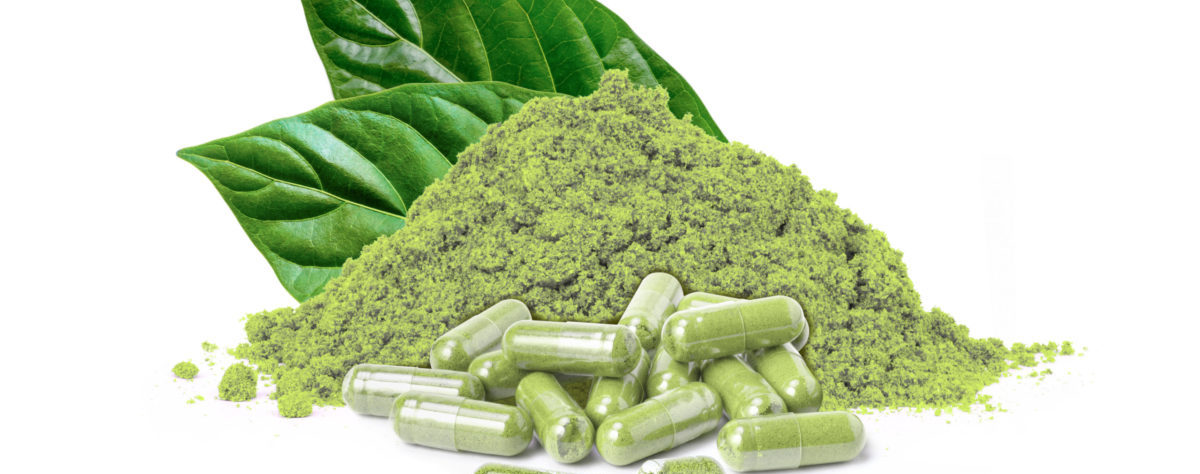
Kratom Addiction
The Addictive Potential of Kratom Use
Table of Contents
Most Americans are aware of a wide variety of addictive substances. In many cases, they also understand the risks that come with using these substances.
However, fewer people are aware of potentially dangerous drugs that have not gotten a lot of publicity. One such drug is kratom.
Today, more and more Americans have started using kratom. Reasons for this use may vary from person to person. But all users of the drug share some significant risks. Among those risks is the possibility of experiencing serious side effects.
In addition, kratom users expose themselves to the possibility of getting addicted to the drug.
What Is Kratom
Kratom is the product of a tree known formally as Mitragyna speciosa. This evergreen species grows in tropical areas of Southeast Asia.
Certain chemicals found in the leaves of the kratom tree have psychoactive effects. This means that they alter your normal perception and experience of reality in significant ways.
Forms of Kratom

Kratom leaves can be used in multiple ways. Common methods in Southeast Asia include:
- Chewing
- Swallowing
- Brewing a kratom tea
Kratom producers can also grind the leaves into a powder and make capsules or pills. These two forms of kratom are typical in the U.S. Producers of the drug may also chemically extract its psychoactive ingredients.
Once extracted, these ingredients can be turned into a liquid.
How Do You Pronounce Kratom
How do you pronounce kratom? Multiple options are considered acceptable. Perhaps the most common pronunciation in the West is kra-tum. Here, the first syllable sounds the same as in the word rat.
In addition, some people pronounce the word as kray-tum or kra-TOM. In Southeast Asia, the ‘r’ in kratom is sometimes silent. Speakers in that region may also use the pronunciation kruh-tome.
Kratom’s Legal Status
Currently, kratom is not a controlled substance at the federal level in America. However, this does not mean that the drug is safe to use. It simply has not yet been declared illegal.
The Drug Enforcement Administration, or DEA, considers kratom a “drug and chemical of concern.”
What Is Kratom Used For
What are the common motivations for taking kratom. In other words, what is kratom used for? The list of possible reasons for taking the drug includes such things as:
- Mood improvement
- Increased physical energy
- Pain relief
- Cramp relief
- Easing of the symptoms of diarrhea
- Relief of panic attacks
In addition, some people attempt to use kratom to ease the symptoms of opioid withdrawal. However, when it comes to taking kratom for these various reasons, researchers generally agree on two points.
First, the drug has no obvious or consistent benefits for its users. Just as importantly, research shows that kratom’s risks far outweigh any potential advantages.
Effects of Kratom Consumption
In some ways, the effects of kratom consumption are unique. Like opioids, the drug likely reaches your brain by accessing sites in your nervous system called opioid receptors.
However, at low doses, kratom does not act like an opioid. Instead it acts like a stimulant. Specific stimulant effects of the drug include:
- Higher energy levels
- An increased sense of alertness
- A greater tendency toward sociable behavior
Only when used in higher doses does kratom begin to resemble a traditional opioid. As with such opioids, common effects include feelings of euphoria and lower sensitivity to pain. If you take especially large amounts of kratom, you may also feel sedated.
How Long Do Kratom’s Effects Last
Once inside your system, kratom begins to alter your normal function in as little as five minutes. You will then continue to experience the drug’s effects for as long as five hours. The impact of kratom is dose-dependent.
In other words, the more you take, the greater the effects.
Potential Side Effects of Kratom Use
Potential physical side effects of kratom use include such things as:
- Increased sweating
- Loss of mouth moisture
- Itchy skin
- Higher urine output
- Nausea with or without vomiting
- Slowed bowels
- Aching muscles
- A rapid heartbeat
- Excessive sleepiness
- Insomnia
- A drop in your normal appetite
You may also experience a range of mental side effects. Examples here include a confused mental state and sensory hallucinations. They also include delusional thinking.
Together, hallucinations and delusional thinking are hallmarks of the extreme state known as psychosis.
Toxic Reactions and Overdose
If you take too much kratom, you may develop a serious toxic reaction to the drug. In turn, this reaction can potentially lead to an overdose.
Unfortunately, no one really knows how much kratom you need to take before being exposed to these risks. Known potential toxic reactions include:
- Convulsions, i.e., seizures
- Spikes in your normal blood pressure levels
- Damage to your liver tissue
- Dangerous reductions in your normal breathing rate
- The unresponsive state of unconsciousness known as a coma
Some kratom-related deaths have also been reported. In most of these fatal cases, other substances were also in use. That includes powerful, addictive substances such as:
- Fentanyl
- Benzodiazepine sedatives
- Alcohol
- Cocaine
However, it also includes the caffeine found in such everyday products as coffee and tea. Most deaths occur after someone uses kratom without realizing that it also contains another substance.
This means that many victims may have been completely unaware that they were in danger.
How Addictive Is Kratom

Research shows that kratom use can lead to some of the classic symptoms of addiction. The first of these symptoms is physical dependence. When you are physically dependent on a substance, your brain needs it to feel “normal.” And if your brain’s level of need is not met, you may develop kratom withdrawal symptoms.
This may happen if your level of drug consumption falls sharply over a small amount of time. It may also happen if your consumption stops altogether. In either case, known possible kratom withdrawal symptoms include:
- Sleeplessness
- A runny nose
- Achy muscles
- Uncontrolled jerky or twitchy body movements
- Unusually aggressive or hostile behavior
- Irritable moods
- Other changes in your normal state of mind
Kratom use can also lead to cravings for the drug when you are not actively taking it. In turn, these cravings may make it hard for you to quit. They can also make it difficult for you to avoid relapsing if you get sober.
Under current guidelines, you only need two symptoms of addiction to be diagnosed with a substance use disorder. You may also receive the same diagnosis if you are not addicted, but still suffer from your substance consumption. Why? Addiction and non-addicted abuse are deeply intertwined problems.
In any given person, they may overlap in a variety of ways. For this reason, addiction specialists view them as different aspects of a single condition.
All of this means that kratom meets the basic definition of an addictive substance. But exactly how addictive is kratom? That is hard to say, in part because researchers have not had time to fully explore this question.
Current information indicates that kratom addiction is less severe than opioid addiction.
Who Is At-Risk for Becoming Addicted?
No one knows how much kratom you must take before developing an addiction. The same fact holds true for how long you must take the drug before you run into problems.
There is simply not enough information available yet to determine likely ranges for most people.
The current lack of knowledge extends to other important areas. Crucially, no one can say for sure how many people are addicted to kratom. What explains this lack of information?
In the U.S., two main tools are used to gather nationwide data on addiction. The first of these methods is the annual National Survey on Drug Use and Health, or NSDUH. This survey gathers information on the drug and alcohol use of all Americans over the age of 12.
It is conducted under the guidance of the federal Substance Abuse and Mental Health Services Administration.
The second nationwide data-gathering tool is an annual survey called Monitoring the Future. This survey focuses specifically on the substance use of America’s teenagers. It is conducted under the guidance of the National Institute on Drug Abuse.
Currently, the NSDUH does not include kratom on its list of surveyed substances. Neither does Monitoring the Future. This means that there is no coordinated effort across the U.S. to assess the extent of addiction to the drug.
Despite these great obstacles, researchers are beginning to understand who has the highest risks for kratom addiction. Available studies put two groups of people into this category:
- Those already affected by serious drug or alcohol problems
- Chronic pain sufferers who are trying to steer clear of opioid medications
Signs of Kratom Addiction
Can you tell if you are addicted to kratom? In addition, can you tell if someone else is addicted? Given the unclear status of kratom addiction, these are not necessarily straightforward questions. As a rule, only a doctor or addiction specialist can say for certain if a diagnosable problem exists.
However, kratom is not currently included among the official sources of substance use disorder. This means that even experts need to proceed carefully when diagnosing kratom-related problems.
Still, it is possible to detect potential signs of kratom addiction or serious kratom abuse. In addition to withdrawal symptoms and kratom cravings, things to look for in yourself or someone else include:
- An inability to control how much kratom you use or how often you use it
- Developing a tolerance to the effects of any given dose of the drug
- Having problems at home, at work or in school as a result of your kratom use
- Making obtaining or using kratom a top priority in your life
- Not being able to stop taking the drug, even when you make a serious effort
- Continuing to take kratom despite clear evidence that it is harming you
- Doing dangerous things while under the influence of kratom
Additional Things You May Notice in Someone Else
Certain changes in appearance may indicate the presence of a kratom addiction in someone you know. Examples of these changes may include:
- Unusually poor grooming
- Declining concern about wearing clean or appropriate clothes
- A general lack of interest in appearance or cleanliness
You may also notice behavioral changes. That may include such things as:
- A changeover of friends or acquaintances
- Sudden or unexplained secretiveness
- Increased defensiveness toward others
You can also look for the specific effects of low- and high-dose kratom intoxication outlined above.
Determining If Kratom Use is the Source of the Problem
It is important to know that you can miss or misidentify the signs of kratom addiction. A number of things help explain this fact. First and foremost are the unique effects of the drug. Someone taking it in low doses may seem to have a stimulant problem.
In contrast, someone taking it in higher doses may seem to have an opioid problem. For these reasons, you may think that a person addicted to kratom is actually addicted to something else.
You may also think that the reverse is true. In other words, you may think that someone addicted to stimulants or opioids is addicted to kratom. Be aware that kratom use is relatively uncommon.
Unless you know someone is taking the drug, it is best not to assume that a kratom problem exists.
Treatment for Kratom Addiction

There is no set treatment for kratom addiction. No medication has been developed for this specific purpose. The same holds true for treatment with psychotherapy. These facts reflect the relatively new status of kratom as a drug of abuse.
However, do not panic if you or someone you love has a kratom addiction. Although no targeted treatments have been developed, addiction specialists still have effective options.
For example, some people have recovered with help from the same medications used to treat opioid addiction. Others have recovered following treatment with a form of psychotherapy called behavioral therapy. Behavioral therapy is also used to treat all other forms of drug and alcohol addiction.
No matter your current situation, an experienced provider can help you develop a beneficial treatment plan.
Seek Help for Kratom Addiction at Emerald Isle
Do you think that you or your loved one may be addicted to kratom? Contact the addiction experts at Emerald Isle today. We provide extensive assessments that can help uncover the presence of a kratom problem. And if you are affected, Emerald Isle can help you recover.
Our full slate of services allows us to treat any form of drug addiction. We are dedicated to supporting your return to sobriety.